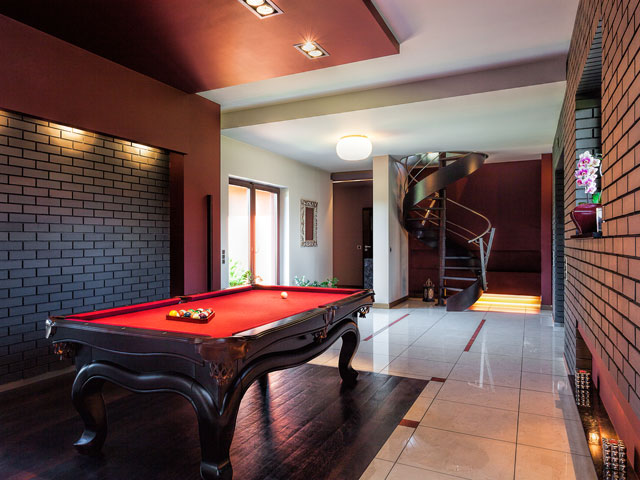Indoor Bounce Houses for Your Family Room and Basement
It's not warm all your long in some places. Sometimes you need to bring the (bouncy) fun inside the house. Let's explore.

Face it, not everyone lives in Florida or San Diego. And while putting a bounce house on snow would be (somewhat?) fine, constantly getting a jumper castle wet is bad for proper maintenance. Trust us, you'd spend a lot more time cleaning the bounce house than actually using it.
Which brings us to using one indoors, something you can absolutely do, if you have the space.
What indoor surfaces are good for Bounce Houses?
Carpet, Laminate, Linoleum, recently refinished or installed smooth hardwoods, click and lock tiles, and other assorted vinyl flooring options work best for indoor bounce house play. You want to make sure that the surface is as smooth as possible when laying out the jumper castle to prevent tears or rips in the seams.
What indoor surfaces are bad for Bounce Houses?
Abrasive surfaces such as brick and rough concrete are not good for laying your bounce house out on indoors. Same goes for really old, worn hardwood floors that have the potential to splinter. Puncturing a bouncy castle not only ends the fun, but is time consuming with regard to it's repair.
The best trick, and this applies to any indoor, and outdoor, surface, is to lay out a tarp to serve as an intermediary between the ground and the bounce house during operation.
What is the best way to keep a Bounce House grounded indoors?
Since you can't stake a bounce house to the ground inside of your home's basement or garage, you are going to want to use weighted anchors. Vinyl sandbags are an ideal choice for accomplishing this task, as they are heavy, yet flexible with regard to how they sit.
If you take the vinyl sandbag route, check up on the reviews online, or, ask the in-store salesperson about them to get a good gauge on their durability. The last thing you'd want is to have to vacuum up a bunch of sand in your family room.
Last, the size of your bounce house and the number of people using it will determine how many anchors you need. This is doubly true if adults use the bounce house, as the added weight tends to push the bouncer around the room a lot.
Common Brands & Models that are good as Indoor Bounce Houses
You can buy these models online, or, search for them at your local big box retailer/toy store.
- Blast Zone Big Ol' Bouncer
- Blast Zone Little Bopper
- Blast Zone Magic Castle
- Little Tikes Dino Bouncer
- Little Tikes Double Fun Slide'n Bounce Bouncer
- Little Tikes Dunk'n Toss Bouncer
- Little Tikes Jump'n Slide Bouncer
Indoor Bounce House Safety
Here's where you have to pay attention a bit. Just because toddlers, kids and adults are using bounce houses inside doesn't mean there aren't things that can go wrong. In fact, there might be more safety challenges indoors than outside in nature.
Here are some safety tips for using a bounce house inside of your home.
- Make sure that there is enough room for jumpers to exit the bounce house safely in case it collapses or is damaged somehow.
- No water or other liquids nearby, both for the sake of the bounce house as well as the electricity needed to operate it.
- Place nothing that is breakable or of value within 6-8 feet of the jumpy castle. If it can be broken, it will be broken.
In a lot of ways, a bounce house is like a trampoline, in that people have the potential to get injured, especially if they fall out and hit the ground. Indoor flooring is far more like to hurt - save for carpet - than the outdoor dirt/grass. So, keep that in mind.
Oh, and one last tip. Also like a trampoline, bounce houses have weight limits. So, make sure you're abiding by the capacity numbers included from the manufacturer.
Wrapping Up
Don't be afraid to set up a bouncy castle indoors if you have room. And, don't be afraid to enjoy the sounds of pure joy coming from the kids using it ... as you're in the other room relaxing.